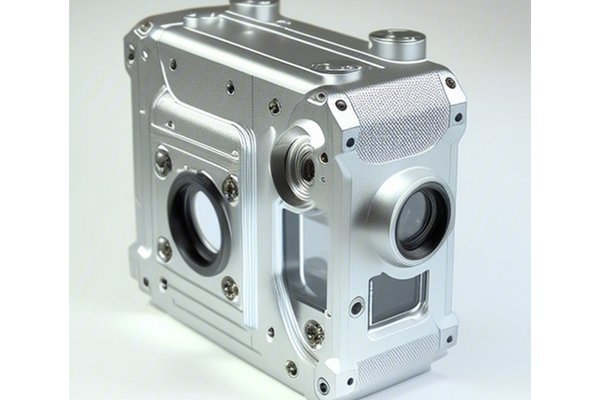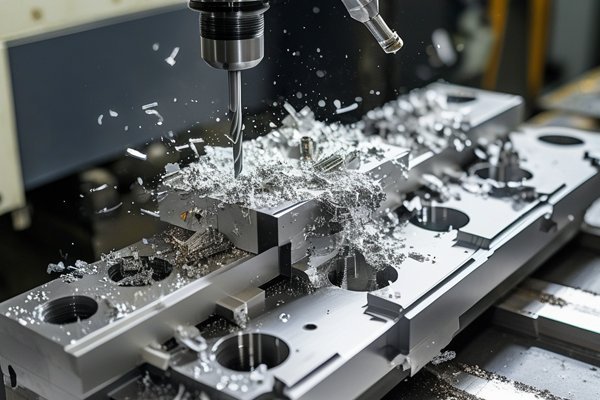Did you know that brass and copper are two of the most widely used metals in a variety of industries, including electrical, plumbing, automotive, and aerospace? These metals are not just prized for their aesthetic qualities but also for their physical characteristics such as corrosion resistance, conductivity, and machinability. According to a recent study, the global copper market alone was estimated at over $150 billion in 2020, highlighting the significance of these metals in manufacturing applications.
In a world where precision and efficiency are paramount, computer numerical control (CNC) machining has emerged as a game-changer. This technology revolutionizes how we produce intricate and high-performance components, particularly when dealing with materials like brass and copper. This blog will dive deep into the various advantages of CNC machining for high-performance brass and copper parts, addressing common challenges and providing detailed solutions.
CNC machining is a manufacturing process that utilizes pre-programmed computer software to control machine tools. This technology allows the automation of intricate tasks like drilling, milling, and turning, resulting in high efficiency and precision that manual machining simply cannot achieve. CNC machining is particularly advantageous when working with non-ferrous metals such as brass and copper due to their unique properties and machining requirements.
By integrating CNC technology into production processes, manufacturers can generate complex shapes and maintain tolerances down to a thousandth of an inch. This capability is crucial for industries that rely on high-quality components, especially in applications where durability and reliability are critical.
Before delving into the benefits of CNC machining for these metals, it’s important to understand the inherent properties that make brass and copper desirable in manufacturing.
Brass is an alloy of copper and zinc, known for its malleability, corrosion resistance, and excellent conductivity. Its unique appearance makes it a favorite in decorative applications, while its mechanical properties enable it to withstand high pressures, making it suitable for plumbing fittings and automotive components.
Copper, on the other hand, is renowned for its unparalleled electrical and thermal conductivity, making it a key material in electrical wiring and electronics. Additionally, copper has excellent resistance to wear and fatigue, making it reliable in demanding applications.
3.1 Precision and Accuracy
CNC machining offers unprecedented precision across high-performance brass and copper parts. The digital control mechanisms ensure that parts are manufactured to exact specifications, minimizing errors and ensuring consistency across batches. This level of accuracy not only reduces waste material but also enhances the performance of the end product.
3.2 Complexity of Design
The ability to create complex geometries using CNC machining is a game-changer for manufacturing brass and copper components. Intricate designs that include fine detail can be produced with ease, which would be difficult or impossible to achieve with traditional machining methods. This flexibility allows for innovation in product design.
3.3 Speed and Efficiency
As industries shift toward rapid prototyping and on-demand manufacturing, the speed of CNC machining becomes a significant advantage. The automated nature of CNC machines means that once a design is programmed, parts can be produced quickly, facilitating shorter lead times and faster market entry for products.
3.4 Reduced Labor Costs
CNC machining minimizes the need for manual labor, reducing costs associated with hiring skilled machinists. By programming machines to operate autonomously, companies can allocate labor to other areas of production, further enhancing operational efficiency.
3.5 Lower Tolerance Variance
CNC machines maintain tighter tolerances than manual machines, crucial when producing parts that interact within assemblies. This reduced tolerance variance results in improved performance and reliability of the finished product.
4.1 CNC Turning
CNC turning is ideal for creating cylindrical parts. Rotating the brass or copper material against a cutting tool ensures smooth finishes and precise diameters. This technique is commonly used for creating shafts, bushings, and similar components.

4.2 CNC Milling
CNC milling incorporates rotary tools to remove material from the workpiece, producing flat or contoured surfaces. This technique allows for a high degree of detail and is suitable for creating complex parts such as brackets and housings in both brass and copper.
4.3 CNC Drilling
CNC drilling can be integrated into machining processes to create accurate holes for fastening components. This method is essential for parts that require precision placement of threaded or unthreaded holes.
4.4 CNC Electrical Discharge Machining (EDM)
EDM is a non-traditional machining process that utilizes electrical discharges to erode material. This technique allows for machining intricate details in hard or brittle materials without causing mechanical stress, making it an effective method for producing fine features in brass or copper.
CNC machining opens the doors to a wide range of applications for brass and copper, such as:
While CNC machining presents many advantages, there are challenges associated with machining brass and copper, which include:
7.1 Selecting the Right Tools
Choosing the appropriate tool material and geometry can significantly affect the machining efficiency of brass and copper. Carbide tools, for instance, provide better wear resistance and performance.
7.2 Utilizing Coolants
Incorporating effective cooling systems can help mitigate heat buildup and reduce thermal distortion, especially when machining copper. This practice prolongs tool life and enhances finish quality.
7.3 Optimizing Machine Settings
Adjusting cutting speeds and feeds according to the specific characteristics of brass or copper will enhance machining performance. Less aggressive settings can help minimize chatter and improve surface finish.
Looking ahead, several trends are expected to shape CNC machining for brass and copper parts:
CNC machining for high-performance brass and copper parts offers numerous advantages: exceptional precision, design complexity, enhanced efficiency, and reduced labor costs. Despite specific challenges, the industry is continuously overcoming these hurdles through technology advancements and strategic planning.
As we venture into an era marked by rapid technological evolution and increasing demand for high-quality components, CNC machining remains a cornerstone of manufacturing that will continue to innovate and adapt. Understanding these techniques is crucial for manufacturers, engineers, and businesses looking to remain competitive in today’s market.
Ultimately, embracing CNC machining for brass and copper is not merely a manufacturing choice but a strategic decision that can enhance product quality, reduce costs, and accelerate time to market. In a world where manufacturing precision matters more than ever, it’s vital to understand and harness the potential of CNC machining to drive your business forward.






